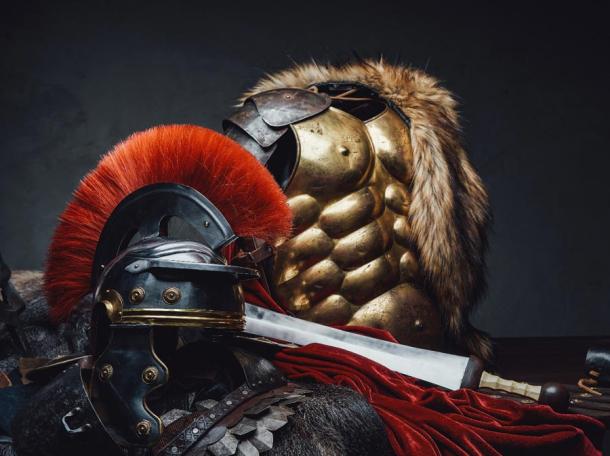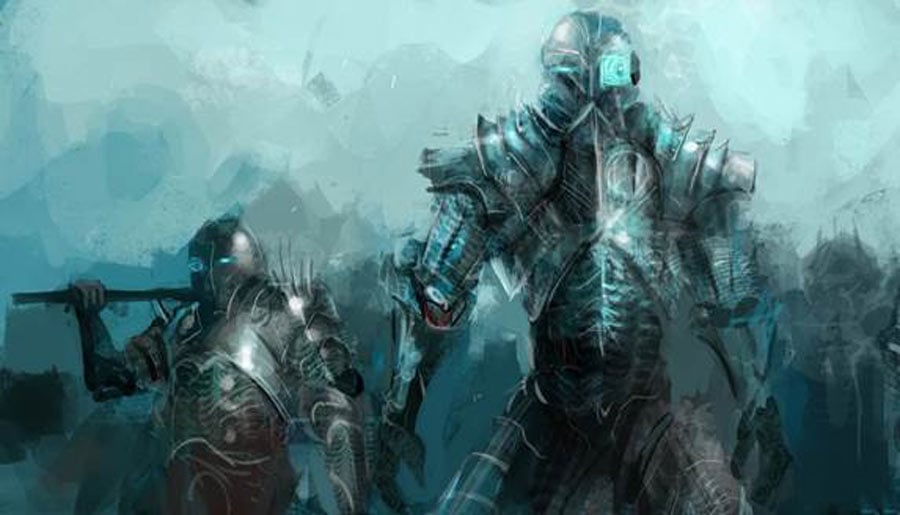Huge Study Tracks The Global Evolution of Ancient Military Technology
An international team of researchers has published a paper that sheds new light on how ancient military technology and the weapons industry changed through time. Their ancient military technology study covers almost 10,000 years of world history, ranging from the late Neolithic period (7,000 BC to 5,000 BC) to modern times.
Using a large centralized digital library known as “Seshat: Global History Databank,” they were able to analyze data obtained from historical and archaeological studies that have taken place all over the globe. They were searching for information about weapons, protective armor, fortifications, and other technologies with clear military applications. The idea was to chart both the evolution and proliferation of these technologies, and then to correlate the changes with social, cultural, and political developments that occurred simultaneously in the world’s societies, nation-states, and empires
While this was a challenging and ambitious project, the researchers found the answers they were seeking. By studying an immense quantity of historical data, they were able to identify the inter-societal factors that contributed to the development of more and more advanced ancient military technology right through to modern times. It was these developments that took us from simple weapons made from stones, bones, and metal to modern weapons of mass destruction.
“We empirically tested previously speculative theories that proposed world population size, connectivity between geographical areas of innovation and adoption, and critical enabling technological advances, such as iron metallurgy and horse riding, as central drivers of military technological evolution,” the researchers explained in their PLOS ONE research study. “We found that all of these factors are strong predictors of change in military technology, whereas state-level factors such as polity [state or empire] population, territorial size, or governance sophistication played no major role.”

Location of nodes on Silk Road routes used in quantifying centrality (red) along with NGA locations (black). NGA (Natural Geographic Area) is a fixed spatial location of roughly 100 x 100 km delimited by naturally occurring geographical features. All polities that occupied the NGA, or part thereof, at a century mark (200 AD for example), are included in our sample. This strategy avoids oversampling while still capturing meaningful changes in the variables of interest. Although this granularity is relatively coarse, it is suitable for uncovering macro-level patterns in societal dynamics and exploring pathways of cultural evolution. (PLOS ONE)
Ancient Military Technology Data From the Seshat Database
This exhaustive historical study was led by Peter Turchin, an evolutionary anthropologist with expertise in statistical analysis and mathematical modeling. Turchin, who is affiliated with the Complexity Science Hub in Vienna, Austria, recruited a team of archaeologists, historians, and data scientists from Russia and the United States to aid his efforts.
“We had two goals for this study,” Turchin explained in a Complexity Science Hub press release. “First, we wanted to draw a clear picture of where and when military technologies appeared in pre-industrial societies. Second, we intended to find out why important technologies were developed or adopted in certain places.”
- Modern Humans' Advanced Weapons Outclassed the Neanderthals
- Oldest Roman Military Camp discovered in Italy was Built to Fend off Fierce Pirates
The study was feasible because of the Seshat database. A decade-old initiative sponsored by the Evolution Institute, the “Seshat: Global History Databank” is comprised of data collected from archaeological, anthropological, and historical studies of ancient societies, dating back to at least the late Neolithic period. It acts as a centralized database for scholars who plan to carry out research projects on the social, cultural, political, scientific, environmental, and military practices of ancient societies of all types and from all time periods.
At the present time, Seshat contains approximately 200,000 entries from more than 500 societies, covering nearly 10,000 years of human history.
“Seshat is a goldmine for the study of cultural evolution,” said Turchin, who is one of its creators, along with an impressive list of renowned anthropologists, historians, archaeologists, mathematicians, computer scientists, and evolutionary scientists.
With access to such a deep and detailed information storehouse at their disposal, Turchin and his colleagues were able to complete an extensive cross-cultural comparison between societies separated by gaps in space and time. Their study provides a perfect example of the type of deep research that the Seshat database can enable.

The spread of horse-mounted cavalry. (PLOS ONE)
Why Military Technology Changed through Time
The Iron Age began in about 1,200 BC in Eurasia (it started a few centuries earlier in Africa), and influenced societal development in multiple and profound ways.
The development of iron smelting played a vital role in the spread of more advanced military technology in ancient times, this new study revealed. The availability of significant supplies of this durable and adaptable metal led to many innovations and improvements in weapons making, and in the production of shields, armor, and other types of protection.
The use of horses in warfare had a similarly large impact. Warriors on horseback could move faster, travel farther, and carry more supplies, while still being able to wield their weapons effectively. A recent study discussed in the journal Nature found that horses were first domesticated on the Pontic-Caspian steppes of the Northern Caucasus region (in modern-day Russia) around 2,000 BC, and the practice of using horses in warfare became more common in the second millennium BC.
What spurred the spread of new technology here, the researchers found, was the fact that inequalities in military technology put nations and societies at risk of being conquered. When iron weapons and domestic horses revolutionized military practices, empires and states that didn’t have them needed to acquire them fast, since their very survival depended on them.
Long-distance trade networks were another major factor that speeded the spread of new and improved military equipment and strategies. Valuable items were readily exchanged along such networks, which meant that useful military equipment could be passed on from one location to another to another at a rapid pace.

The spread of iron metallurgy.(PLOS ONE)
Military technology could travel a long way along such trade routes, including the famed Silk Road routes that connected Europe with the farthest reaches of Asia, and all points in between. The Silk Road facilitated long-distance trade of coveted goods and supplies beginning in the second century BC, and remained active for 2,000 years after that.
Another driver of increased innovation in military technology, and its rapid spread, was world population growth.
In general, population growth increased competition for increasingly scarce arable land and other important natural resources. This encouraged increased investments in military technology, as states had to worry about the people crowding in all around them.
Surprisingly, the researchers found little or no relationship between internal developments in states or empires and the advancement and spread of military technology. It has long been believed that as states grew in size, wealth, and bureaucratic complexity, their technological capabilities would improve in all areas, including those relating to warfare capacity. But the data showed this was actually not the case.
What this suggests is that advancements in military technology were driven by necessity. In other words, nations increased their investments in weapons technology when they gained a survival-related advantage by doing so. If they felt stable and secure, innovations in weapons-making and defense were slow to come.

Roman military technology included improvements in armor, helmet, and shields. (Fxquadro / Adobe Stock)
The Role of Military Evolution in the Rise of Empires
While their main focus was on how societal changes may have affected the evolution of military technology, the researchers also discovered something about how changes in military technology affected the evolution of societies.
“Some military inventions had cascading effects on cultural and social evolution,” Turchin explained. “The invention of bit and bridle, for instance, made it easier to control horses, which led to advances in weapons or the appearance of mounted archers and knights, which again made it necessary to build better fortifications. According to our study, this bundle of military technologies was one of the most important factors leading to the rise of mega-empires and of world religions like Christianity, Buddhism, and Islam during the first millennium BCE.”
- Were Catapults the Secret to Roman Military Success?
- Medieval Japanese Weapons Influenced Culture Long After the Middle Ages
It seems access to better military technology was directly connected to the rise of some of the largest empires in history, including the Roman Empire, China’s Han Dynasty, the Persian Achaemenid Empire created by Cyrus the Great, and the Umayyad Caliphate (the first great Muslim Empire). As the destructive potential of weapons grew, the size of the states that possessed them and used them also grew.
The connection between military technology and societal and cultural evolution is indisputably complex, revealing cause-and-effect relationships that go in both directions.
Top image: Is this ancient military technology or the future? Given how the evolution of technology unfolded it is likely a combination of both. Source: Dusan Kostic / Adobe Stock
By Nathan Falde

















